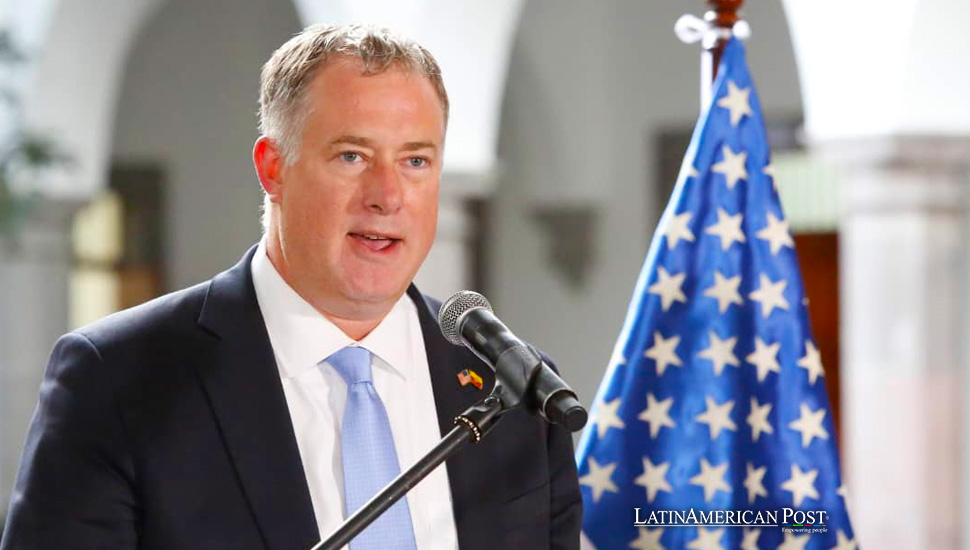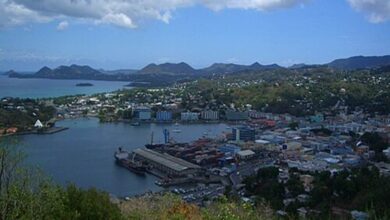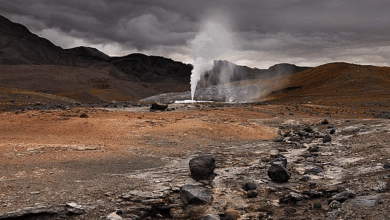Navigating Tensions: The U.S. Defense Official’s Visit to Guyana”

In the lush landscape of South America, where dense rainforests and winding rivers dominate the scenery, a quiet storm brews along the border between Guyana and Venezuela. The source of this simmering conflict lies in the oil-rich Esequibo region, a vast expanse of land spanning 160,000 square kilometers (62,000 square miles).
Historical Disputes: Venezuela’s Claim to the Esequibo
Historically, the Esequibo has been regarded as part of Guyana’s territory. Still, recent years have seen Venezuela rekindle its longstanding claim to this disputed land and adjacent offshore areas, driven by substantial oil and gas discoveries. As tensions continue to rise, the international community watches closely, and the United States is taking action.
U.S. Deputy Assistant Secretary of Defense for the Western Hemisphere, Daniel P. Erikson, embarks on a mission of great significance – a visit to Guyana. This visit is a testament to the United States’ commitment to strengthening defense and security cooperation with Guyana, emphasizing pursuing a “U.S.-Guyana bilateral defense and security partnership in support of regional stability.”
Diplomatic Accord: A Fragile Resolution to the Esequibo Feud
The longstanding feud between Guyana and Venezuela over the Esequibo region lies at the heart of the matter. Both nations reached a significant agreement last month to defuse the situation, pledging to refrain from using force to settle their disputes. While offering a glimmer of hope, this diplomatic accord underscores the gravity of the problem.
Guyana, the smaller of the two nations, faces the daunting challenge of safeguarding its territorial integrity against its larger neighbor’s claims. As Venezuela reasserts its position on the Esequibo, it casts a shadow over the region’s stability and security. The ramifications extend beyond territorial boundaries, touching upon the energy resources discovered in offshore areas claimed by both nations.
Britain’s Naval Intervention and Global Interests
Late last December, the situation took an international turn when Britain dispatched the Royal Navy patrol vessel HMS Trent to Guyana. The mere presence of a British warship in its former colony ignited tensions, infuriating Venezuelan President Nicolas Maduro’s administration. It underscored the intricate web of historical ties, territorial disputes, and global interests intertwined in this South American drama.
The U.S. involvement in this delicate situation reflects its growing concern over regional stability and security in the Western Hemisphere. By sending a high-ranking defense official, the U.S. is signaling its commitment to bolstering its alliance with Guyana, a nation grappling with complex challenges.
The visit by Daniel P. Erikson, a seasoned diplomat, emphasizes the need for diplomacy and peaceful resolution in the face of escalating tensions. While the U.S. certainly possesses the military might to sway the balance, it recognizes the importance of dialogue and cooperation.
Guyana’s Role in Regional Stability
The journey to forge a robust “U.S.-Guyana bilateral defense and security partnership” is a testament to the significance of regional stability in the Western Hemisphere. Guyana’s strategic location and its role in the evolving geopolitics of the region make it a key player on the global stage.
As the U.S. seeks to navigate these tumultuous waters, it does so with a sense of responsibility and commitment. The stakes are high, as the Esequibo region represents not only disputed territory but also the future energy security of both nations.
Also read: Maduro and Ali to Discuss Venezuela-Guyana Border Dispute
The diplomatic path ahead is fraught with challenges, but the alternative – an escalation of tensions, potential conflicts, and a disruption of regional stability – is far more complex. As diplomatic efforts unfold, the world watches with bated breath, hopeful that dialogue and cooperation will prevail over hostility and aggression.
Amid a lush South American landscape, two nations grapple with their shared history and territorial disputes. The U.S. defense official’s visit to Guyana is a beacon of hope in these turbulent times, a reminder that diplomacy can quell tensions and pave the way for a more stable future.





